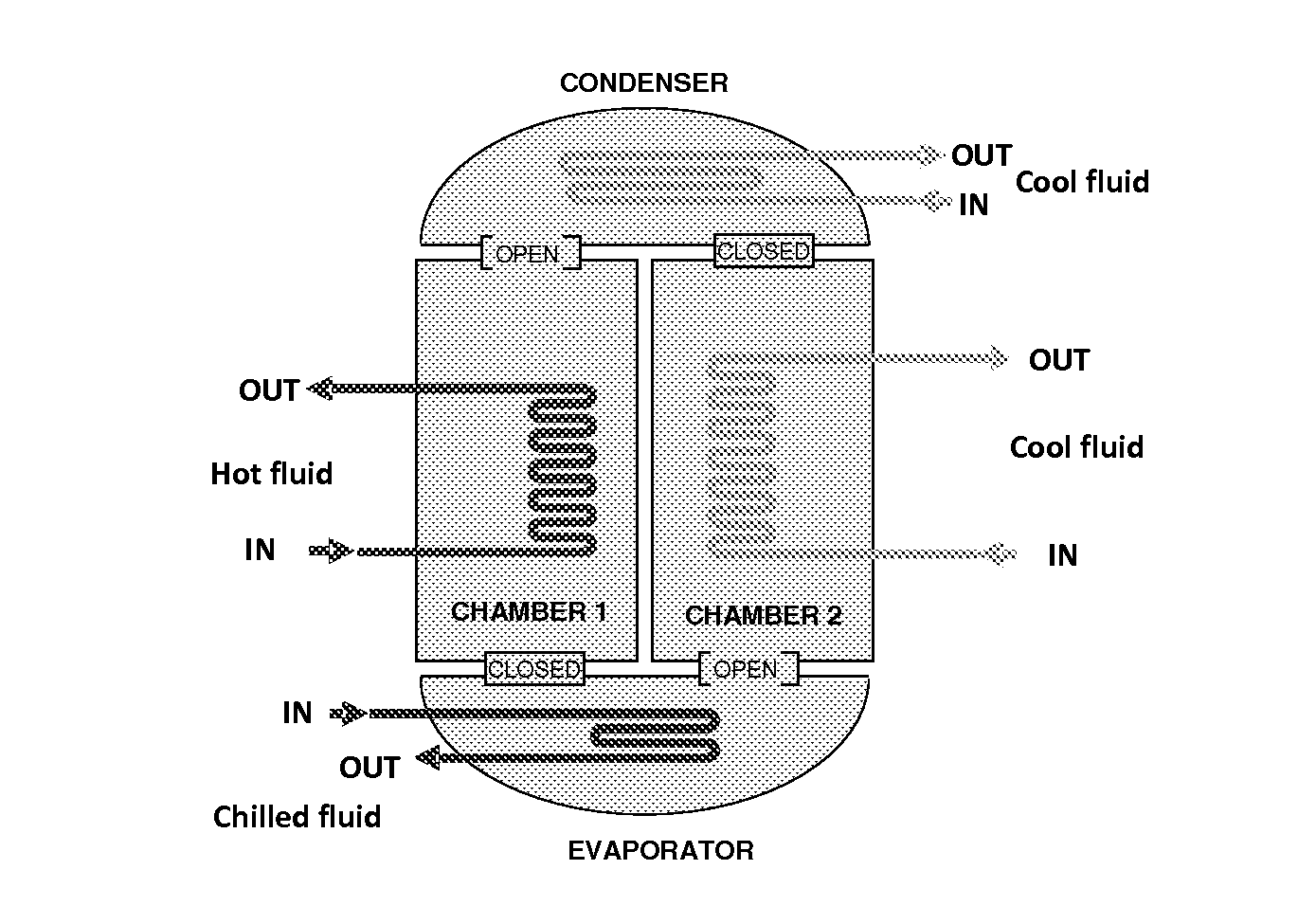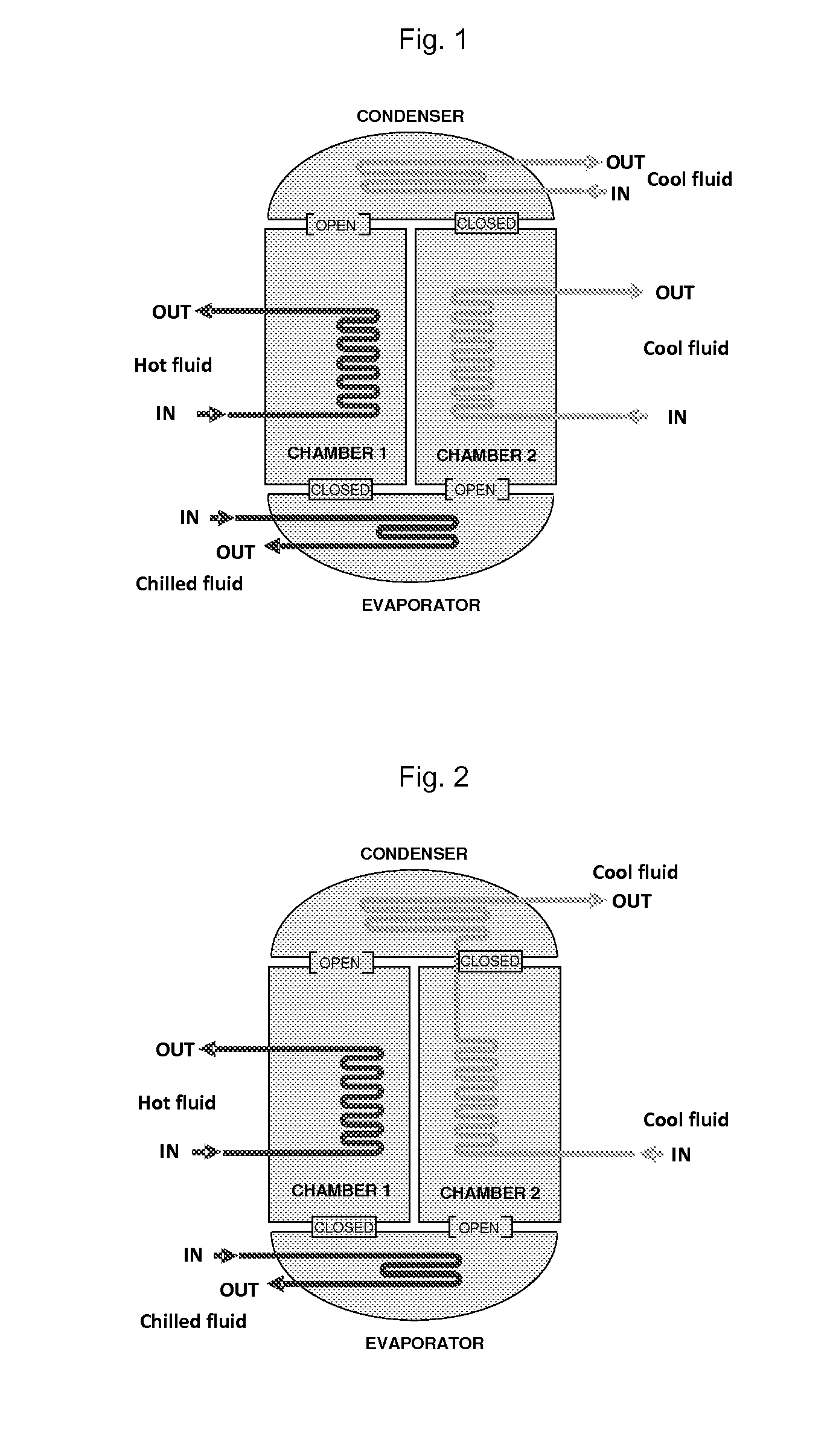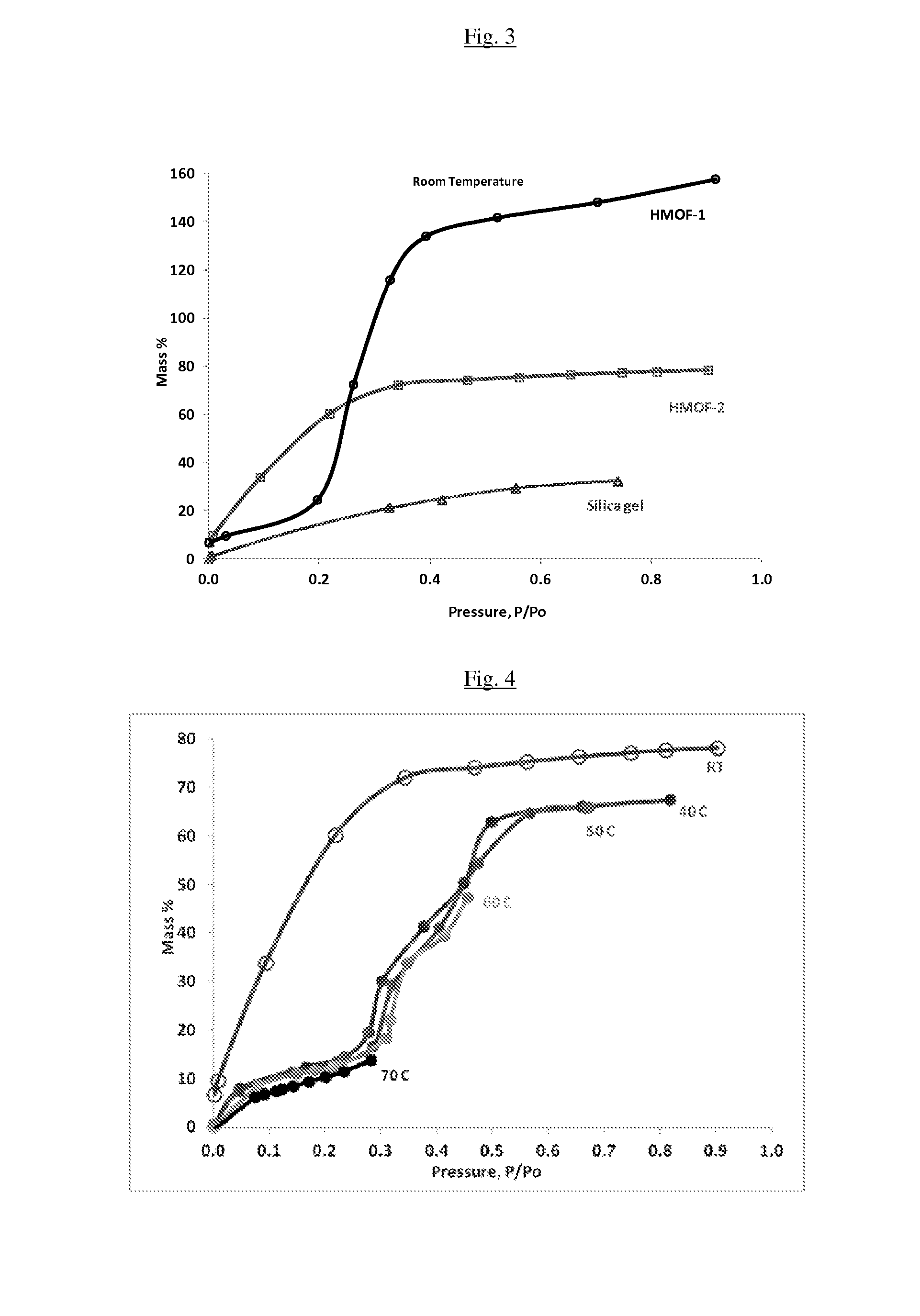Adsorption systems using metal-organic frameworks
a technology of adsorption systems and metalorganic frameworks, applied in the direction of complex cyanides, lighting and heating apparatus, separation processes, etc., can solve the problems of complex control, large thermal mass, low cop (0, thermophysical property limitations of adsorbent-refrigerant combinations, etc., to achieve high mass loading, low heat of adsorption, and high heat dissipation efficiency
- Summary
- Abstract
- Description
- Claims
- Application Information
AI Technical Summary
Benefits of technology
Problems solved by technology
Method used
Image
Examples
example 1
[0102]CuBTC and MDOBDC were synthesized and then water adsorption measurements were performed using an intelligent gravimetric gas analyzer (IGA).
[0103]The mass uptake was measured as a function of pressure and the approach to equilibrium was monitored in real time. After equilibrium was established, the vapor pressure was increased to the next set pressure value, and the subsequent uptake was measured until equilibrium was reestablished. The increase in weight due to adsorption for each pressure step was plotted against the pressure. The adsorption of water in CuBTC was found to be 50 wt % at P / Po=0.3 or 10 mbar of pressure with very little desorption hysteresis. These results suggest that water loaded in CuBTC can be desorbed under a partial vacuum with very little additional heat input.
[0104]Using the method described above, water adsorption measurements were performed on MgDOBDC, NiDOBDC and CoDOBDC separately at room temperature. At P / P0=0.4, the water uptake in these three MOF...
example 2
[0105]Water adsorption experiments were performed on MIL-101(Cr), MIL-100(Fe), and CoCo. The sorption of water in MIL-100Fe was found to be 80 wt % at P / P0=0.9 with reversible adsorption and desorption of water molecules. The MIL-100Fe has pore diameters of 25 and 29 Å as confirmed by the single crystal X-ray diffraction. The MIL-101Cr was found to have mesoporous cage diameters of 29 and 34 Å. Water sorption of MIL-100(Fe) and MIL-101(Cr) indicate an uptake of 80 to 150 wt % at P / P0=0.9. The LZnPyCl showed a water update of 12 wt % at P / P0=0.95. Water sorption tests on CoCo indicate an uptake of water of 20 wt %. The results are summarized in FIGS. 7a, 7b, 7c and 7d.
example 3
[0106]Sorption experiments were conducted on MIL-101(Cr) (FMOF-1) with R-12 (dichlorodifluoromethane), R-125 (pentafluoroethane), R-143a (1,1,1-trifluoroethane), and R-22 (chlorodifluoromethane). Sorption experiments were conducted on MIL-100(Fe) (FMOF-2) with R-22 (chlorodifluoromethane). Results are summarized in FIG. 8.
PUM
| Property | Measurement | Unit |
|---|---|---|
| diameter | aaaaa | aaaaa |
| temperature | aaaaa | aaaaa |
| temperature | aaaaa | aaaaa |
Abstract
Description
Claims
Application Information
 Login to View More
Login to View More - R&D
- Intellectual Property
- Life Sciences
- Materials
- Tech Scout
- Unparalleled Data Quality
- Higher Quality Content
- 60% Fewer Hallucinations
Browse by: Latest US Patents, China's latest patents, Technical Efficacy Thesaurus, Application Domain, Technology Topic, Popular Technical Reports.
© 2025 PatSnap. All rights reserved.Legal|Privacy policy|Modern Slavery Act Transparency Statement|Sitemap|About US| Contact US: help@patsnap.com



